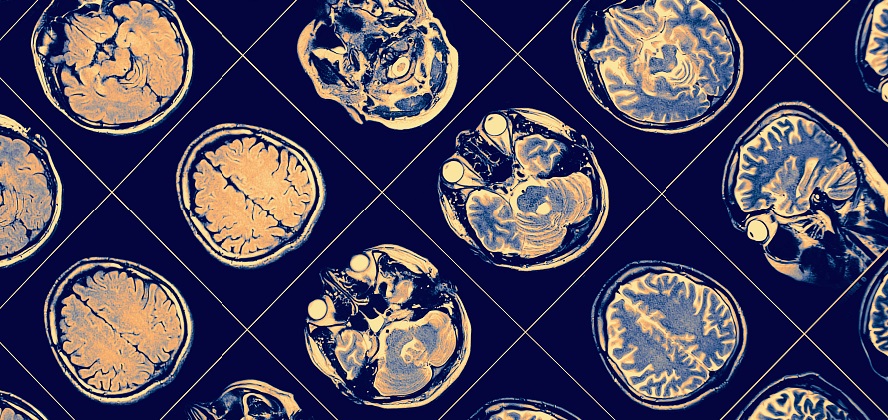
By studying the South African tribe of the Xhosa, researchers confirmed the hypothesis that schizophrenia is caused by one or a few severe damaging mutations, and most often within genes expressed in the brain.
This web page was produced as an assignment for an undergraduate course at Davidson College.
The South African tribe of the Xhosa was chosen for this study by Gulsuner, et al. due to the great wealth of human genetic diversity. The overall aim of this study is to learn more the Xhosa and the genetic influences of schizophrenia within this population.
Schizophrenia is a mental disorder characterized by hallucinations or otherwise extremely disordered thinking that may impair daily functioning. The genetic hypothesis for schizophrenia comes from recent or spontaneous damaging mutations (“de novo”) and are generally rare.
Schizophrenia has a complex inheritance with many involved genes, with new estimates reaching 600 implicated genes or over 100 loci that have a significance involved in inheritance (Harrison, et al 2015). The current genes accounting for schizophrenia are thought to be involved in brain development all across the board, but Gulsuner, et al. hopes to learn more about characterizing these genes within a given population.
The Xhosa population in South Africa can trace ancestry back to modern humans, with a divergence at least 100,000 years ago. The Xhosa live in South Africa and represent the largest population within the Eastern Cape. Genetic variation among the Xhosa, for both control participants and cases, is much higher than non-African genomes, providing a much higher wealth of diversity to study. Because there was relatively small migration from Africa, a high number of alleles remain on the continent, rather than common variants found throughout a greater global population. Not only is this subset population helpful for more genetic diversity, but it also represents missing data for many people of African and non-European descent.
With a broad sample from the Xhosa population, the researchers did a whole-exome sequence study (a study of protein-coding genes) for 2,092 participants. They compared “private variants,” defined by a variant only appearing in one case or one control, and “damaging variants,” which classifies nonsense, frameshift, splice-disrupting, and missense mutations.
A “case gene” represents a gene in which a private damaging variant is within a mutation-intolerant gene. For example, a gene MUC5B is a control gene, harboring seven different private damaging variants in controls and none in cases.
Overall, the researchers for this study found that cases were much more likely to contain private damaging mutations in case genes, or control genes that were intolerant to such mutations.
When looking closer at these genes, the distribution of mutations was consistent with the original research hypothesis that schizophrenia is caused by the presence of one to several damaging variants.
Cases were much more likely (than controls) to harbor private damaging mutations, and specifically in genes expressed within the brain and synaptic functioning. In addition, the Xhosa population cases were much more likely to carry private damaging mutations (than controls) in genes downregulated in schizophrenia, autism, or up-regulated in bipolar disorder. Controls were not seen to have damaging mutations in any of these disorders. In essence, these damaging and severe mutations were found in participants with schizophrenia much more than controls.
There was not one single gene that was isolated after multiple comparisons, though the researchers suggest future studies and larger sample sizes. Additionally, after comparing the results from the Xhosa to a set of Swedish controls, the results stayed very similar: as with the Xhosa, Swedish cases were significantly more likely than controls to harbor private damaging mutations in case genes, or mutation-intolerant control genes (Gulsuner et al 2020).
Finally, the researchers were able to make several inferences from this study, including that private damaging mutations in genes important for synaptic plasticity and neural circuitry were enriched in schizophrenia cases. These genes are generally conserved, intolerant of mutations, and enriched for de novo mutations associated with many different developmental disorders (Gulsuner et al 2020).
Some examples of synaptic genes harboring private damaging mutations include GRIA2 (glutamate) and DRD2 (dopamine). Examples of synaptic genes disrupted by these private damaging mutations, in multiple cases, include HTT (huntingtin), and its kinase KALRN, among others.
As schizophrenia is highly sporadic and heterogenetic, there is no one single gene to isolate. However, we can take information from this study and apply it to future medical interventions, such as treatments for schizophrenia targeting synaptic structural organization and intracellular signaling, rather than an overall target of general neurotransmitters throughout the central nervous system. Additionally, the researchers hope to add on to this study with a greater number of participants to sequence genes several times through in hopes for finding more genes of interest involved in schizophrenia. However, as Harrison, et al. notes, finding associated genes simply is the beginning of a long process in broadening overall biological understanding and bettering any current available treatment we have so far.
This study also helps prove the indelible effect of studying African populations with high levels of genetic diversity and the promise for more gene detection worldwide. Not only can more studies with African participants fill out our own knowledge, but it also begins to fill in a large gap of science with people of non-European ancestry.
Sophie Byers is a Biology major at Davidson College in Davidson, NC. Contact her at sobyers@davidson.edu.
Back to home page here.
References
- Gulsuner, S., Stein, D.J., Susser, E.S., Sibeko, G., and Pretorius, A., et al. “Genetics of schizophrenia in the South African Xhosa.” Science (New York, N.Y.) vol. 367,6477 (2020): 569-573. doi:10.1126/science.aay8833
- Harrison, Paul J. “Recent genetic findings in schizophrenia and their therapeutic relevance.” Journal of psychopharmacology (Oxford, England) vol. 29,2 (2015): 85-96. doi:10.1177/0269881114553647
© Copyright 2021 Department of Biology, Davidson College, Davidson, NC 28036
